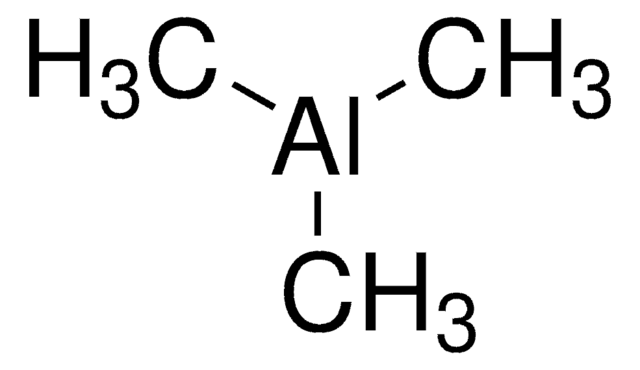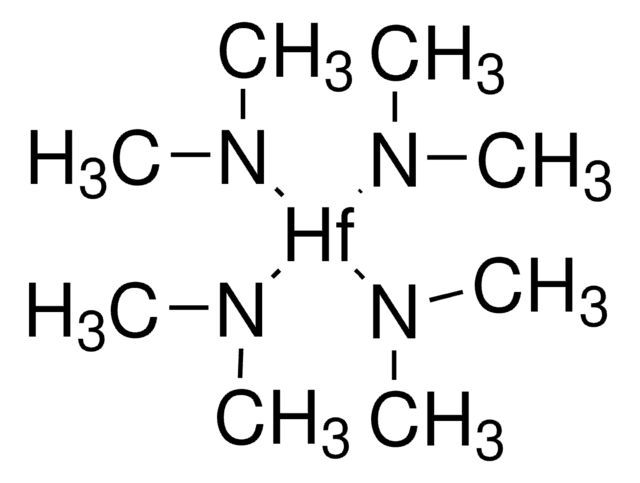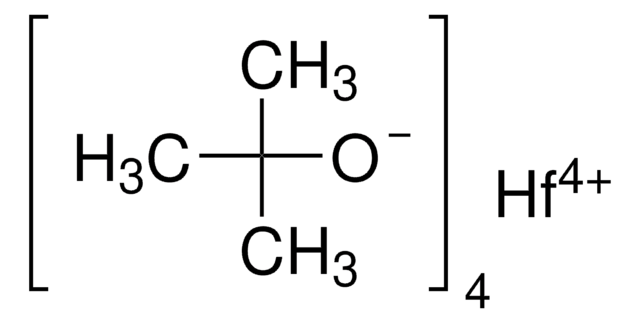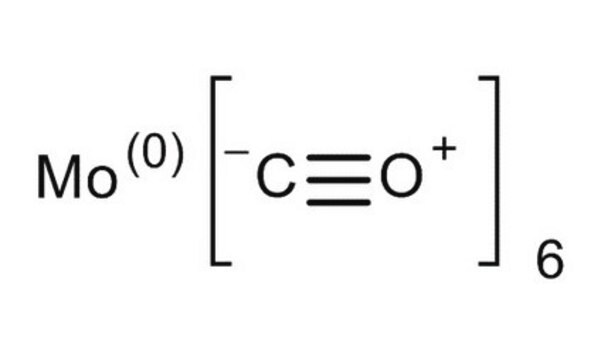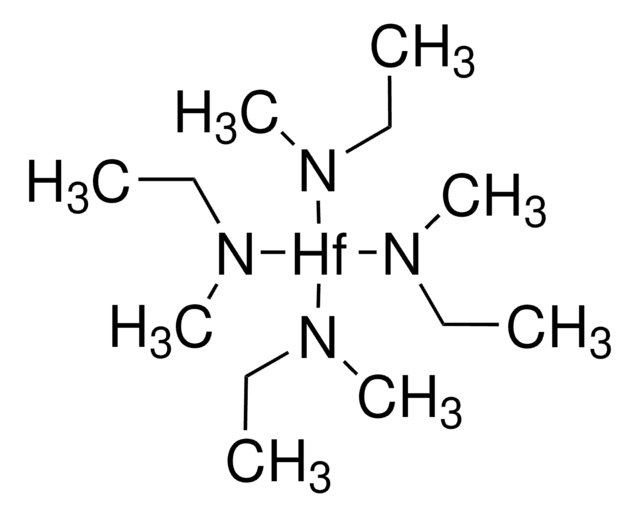754943
Molybdenumhexacarbonyl
packaged for use in deposition systems
Synonyme(s) :
Hexacarbonylmolybdenum(0)
About This Item
Produits recommandés
Densité de vapeur
9.1 (vs air)
Niveau de qualité
Essai
99.9% (trace metals analysis)
Forme
solid
Pertinence de la réaction
core: molybdenum
pb
156 °C (lit.)
Pf
150 °C (dec.) (lit.)
Densité
1.96 g/mL at 25 °C (lit.)
Chaîne SMILES
[Mo].[C-]#[O+].[C-]#[O+].[C-]#[O+].[C-]#[O+].[C-]#[O+].[C-]#[O+]
InChI
1S/6CO.Mo/c6*1-2;
Clé InChI
KMKBZNSIJQWHJA-UHFFFAOYSA-N
Vous recherchez des produits similaires ? Visite Guide de comparaison des produits
Mention d'avertissement
Danger
Mentions de danger
Conseils de prudence
Classification des risques
Acute Tox. 3 Inhalation
Code de la classe de stockage
6.1A - Combustible acute toxic Cat. 1 and 2 / very toxic hazardous materials
Classe de danger pour l'eau (WGK)
WGK 3
Point d'éclair (°F)
Not applicable
Point d'éclair (°C)
Not applicable
Faites votre choix parmi les versions les plus récentes :
Certificats d'analyse (COA)
Vous ne trouvez pas la bonne version ?
Si vous avez besoin d'une version particulière, vous pouvez rechercher un certificat spécifique par le numéro de lot.
Déjà en possession de ce produit ?
Retrouvez la documentation relative aux produits que vous avez récemment achetés dans la Bibliothèque de documents.
Notre équipe de scientifiques dispose d'une expérience dans tous les secteurs de la recherche, notamment en sciences de la vie, science des matériaux, synthèse chimique, chromatographie, analyse et dans de nombreux autres domaines..
Contacter notre Service technique

